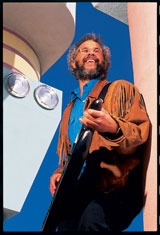|
|
How Sweet It Is |
October 1999 |
|
On the eve of the final Audio Engineering Society convention of the 1990s, it's interesting to reflect on the state of the pro-audio industry at the time of the first AES convention of this decade. We're going to see a very different show this year, one that reflects a decade of progress.
At the 1990 AES convention in Los Angeles, the distinctions between the pro-audio and home-recording worlds were clear, though harbingers of change were starting to appear. The personal-studio movement was still aborning, and it got little respect. MIDI was a dirty word in the pro community. The pre-ADAT Alesis displayed only semipro products, and Mackie Designs had not yet appeared at an AES show.
Some two dozen companies showed computer products at that 89th AES convention, notably Digidesign, Digital Audio Labs, Hybrid Arts, Mark of the Unicorn, Opcode, Passport, Spectral Synthesis, and Turtle Beach. You've never heard of most of the others. Even for the established leaders, acceptance in the pro community came slowly.
In 1990, quality condenser mics were prohibitively expensive by personal-studio standards, as were pro-quality powered monitors. Digital Audio Workstations were expensive, closed systems consisting of dedicated hardware and software. For the most part, pro-audio products were intended for commercial studios; few home recordists could afford them.
At this year's 107th AES convention in New York, relatively few manufacturers will pitch products exclusively to owners of commercial facilities. Today, we personal-studio owners have become an extremely significant market force, and the pro-audio manufacturers are well aware of it. Of course, some products will still be targeted at high-end commercial studios where corporate clients drop big bucks. But the owner of your local commercial studio will probably check out many of the same products that interest us. Products that have become personal-studio hallmarks, such as computer hardware and software and low-cost "traditional" audio hardware, will be taken for granted as mainstream professional tools.
This sea change has occurred because the personal studio and the professional studio have converged. A large and increasing amount of professional work is produced in personal facilities, supported by ever more efficient, affordable, and high-quality tools. Furthermore, the average income (and therefore, buying power) of semipro and nonprofessional studio owners has significantly increased. In short, whether you operate your studio as a business or not, you can afford tools that meet professional standards.
Ten years ago, we personal-studio owners mostly produced demos and other nonprofessional projects because the state of the technology and the industry defined the personal facility as a hobbyist's playground. A few creative souls made professional recordings at home, but they were exceptions. Not anymore. Today, we are more likely to be limited by our skills and knowledge than by the type of tools we can afford. And that, my friends, is the sweet fruit of the personal-studio revolution at the end of the 1990s. |
